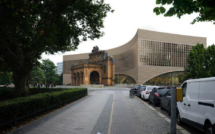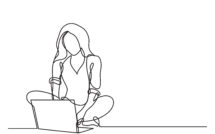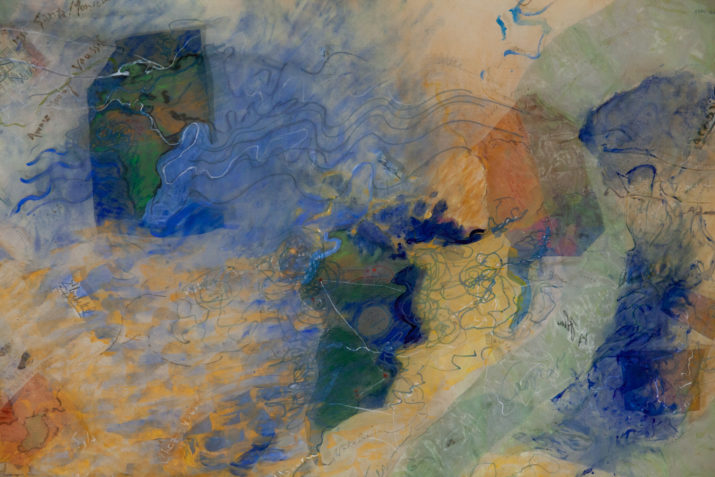
This is part of our special feature, Displacement, Memory, and Design.
This audio visual essay presents a discussion between artist/anthropologist Susan Ossman and sociologist/writer Olga Sezneva focused on Ossman’s” Sources,” an installation/painting she made for an exhibition on “WALLS” at the Kapelle der Versöhnung at the Berlin Wall Monument curated by The Moving Matters Traveling Workshop (MMTW) in 2017. The 190cm x 450 cm artwork is made with acrylic, ink, stones, bricks, wire, canvas, paper, plaster, sand, thread and photographs on silk organza. The poly-modal format of the essay—a combination of image, voice and text—follows up on these multiple media and the flowing, malleable, installation. It is an effort to break the confines of the page and be faithful to the kinship of art and memory as shifting and versatile.
Art can be a way of inscribing memories, but also a technique for recollection. Artists draw on archives and personal histories and work through embodied memories in diverse media to activate memory to illuminate current events or conditions. Memory, refracted through a wide array of artistic relationships—associations, repetitions, reappearances, and “hauntings”—becomes, in turn, an agent of imagination. Thus, Marina Abramović’s Seven Easy Pieces resuscitates decades-removed performance pieces of other artists. Francisco Suoto’s work discloses an interest in the nature of human memory and in notions of place and spatial relationships. Christian Boltanski’s impressive body of work addresses a more general histories and collective memories. Where migration as the object of recollection as artistic creation is concerned these limited examples expand exponentially.
Ossman made “Sources” with elements of her own experiences of crossing borders, making new homes and learning to live in new places. “Sources” also references the political conditions that enable her movement or impede that of others. The work invites the viewer to reflect on these and to imagine their own place on the silky map story. Sezneva picks up on these to probe how the art incites the viewer’s own memory-work. Its lines and colors and collections of stone activate recollections, trigger associations, and shine a spotlight on the moments of active forgetting.
To “read” this discussion around “Sources”, scroll down, select an image or images of interest and press “play.” No episode and no fragment is meant to be self-contained. There is no “right” order.
–Olga Sezneva and Susan Ossman for EuropeNow
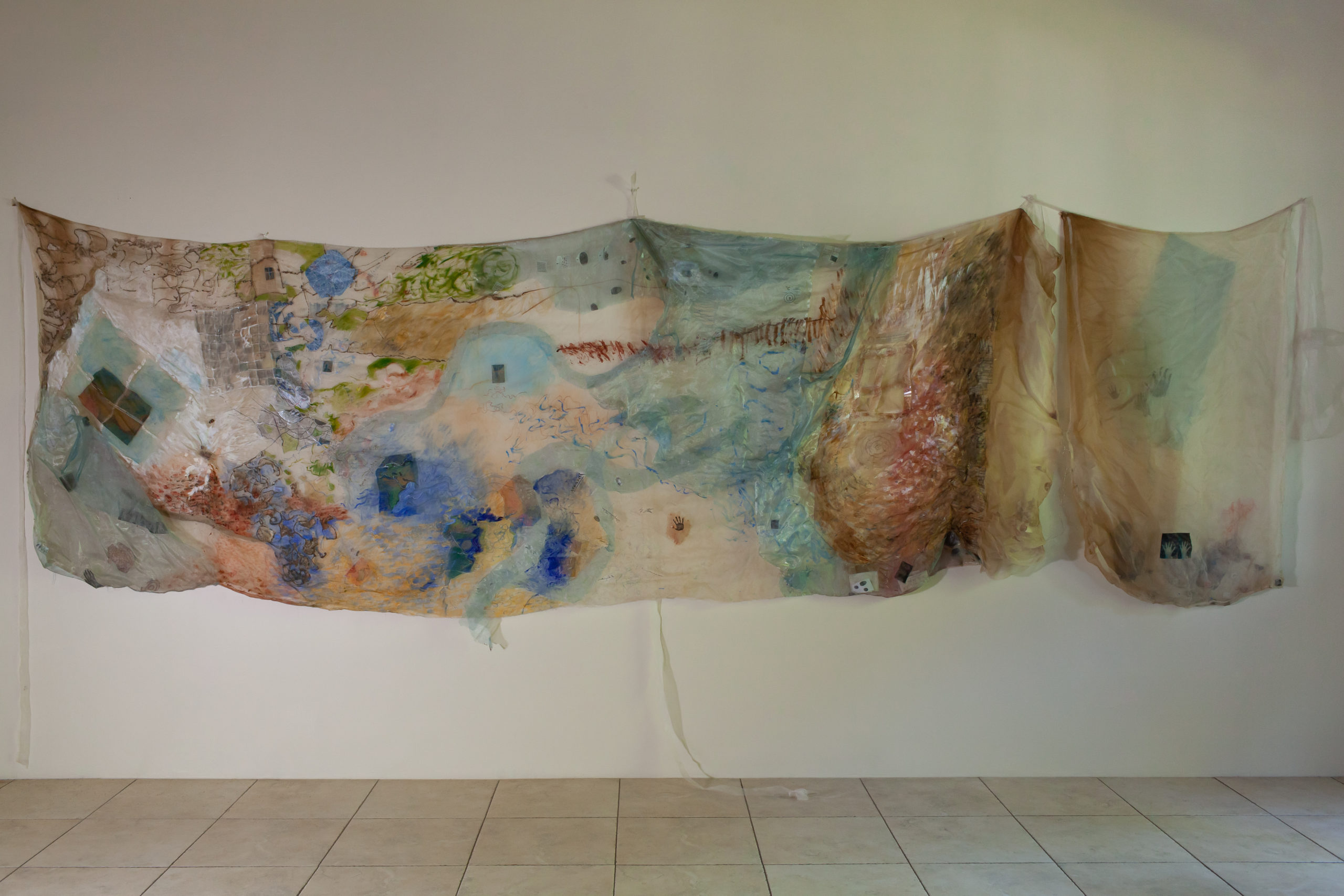
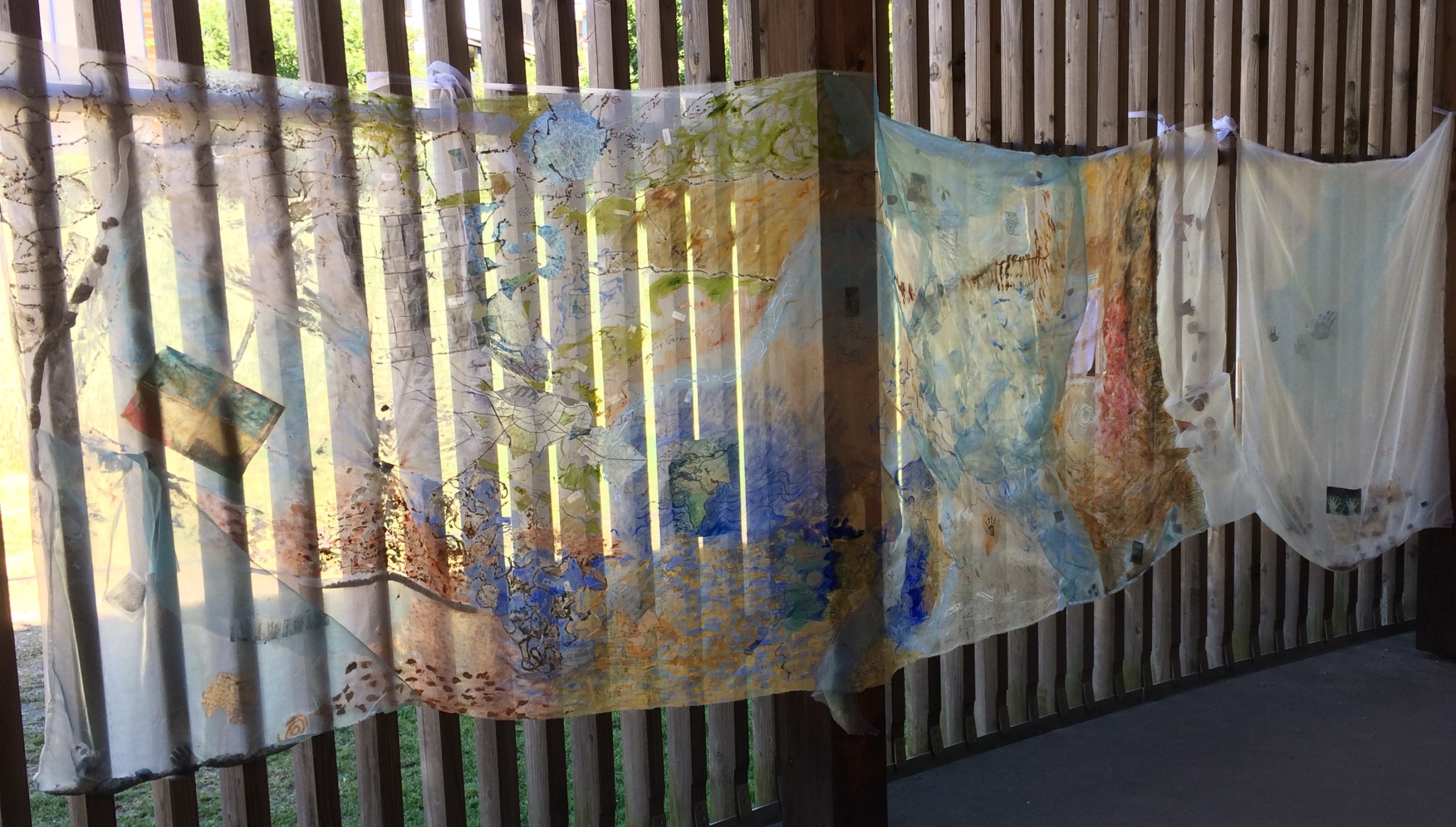
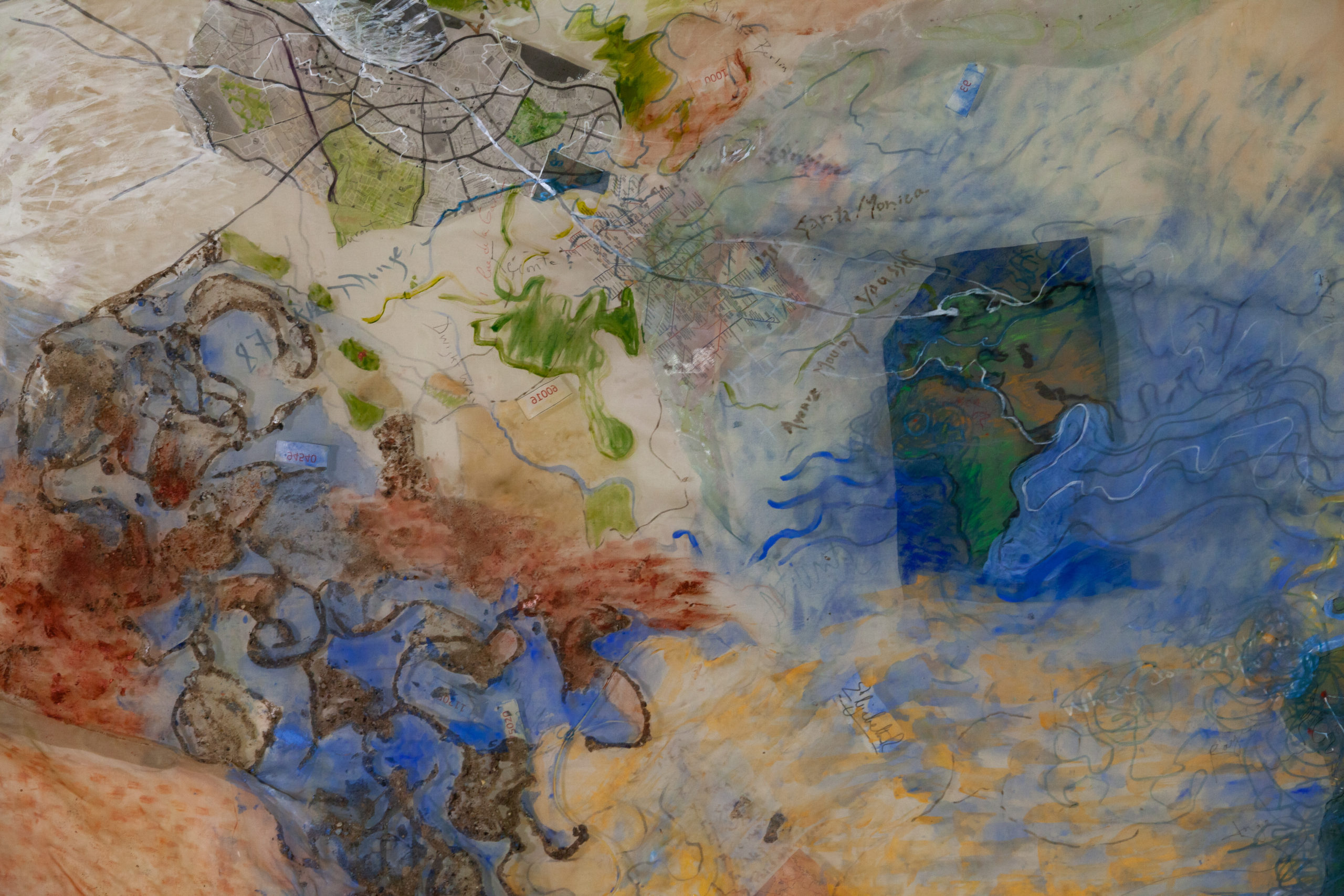
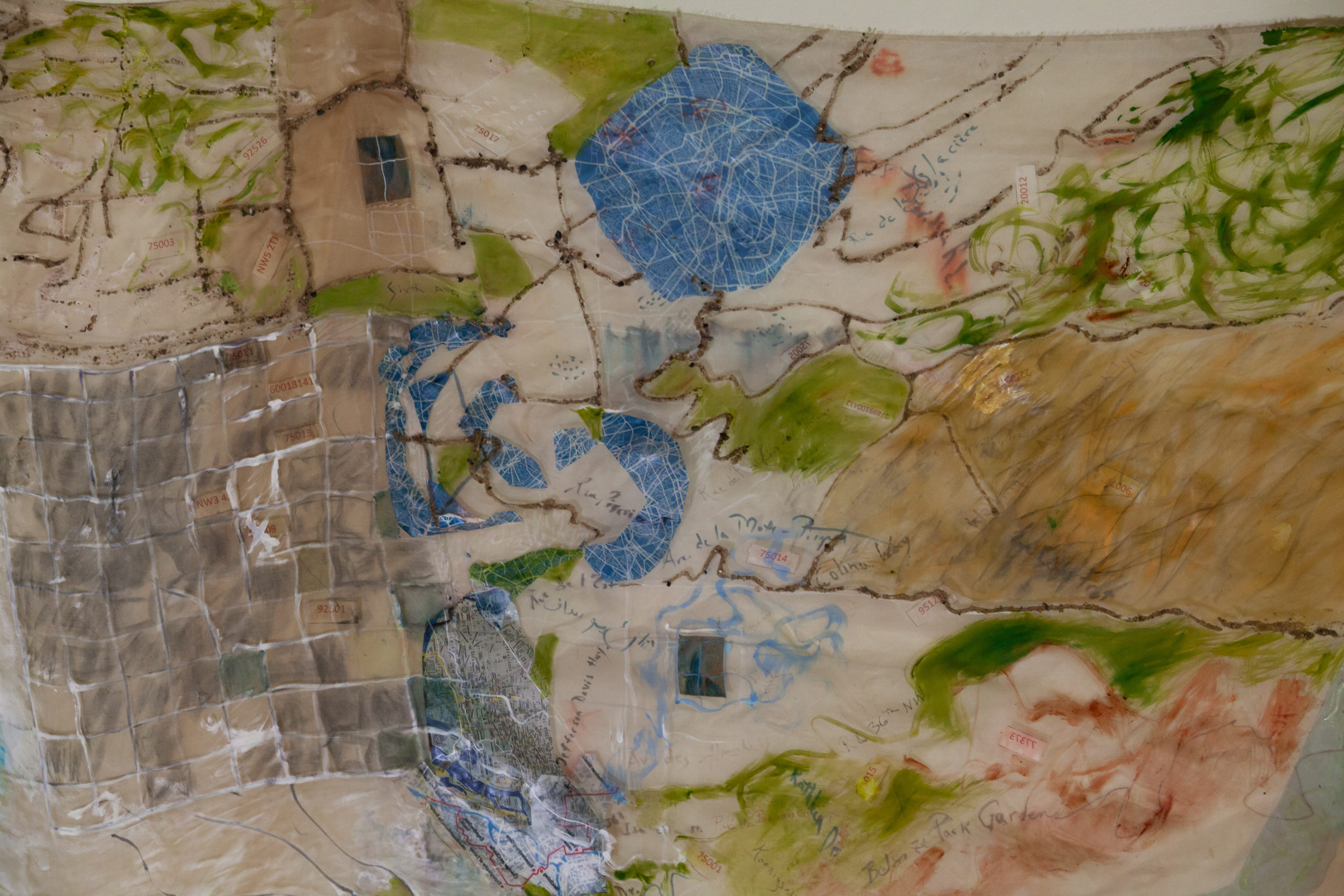
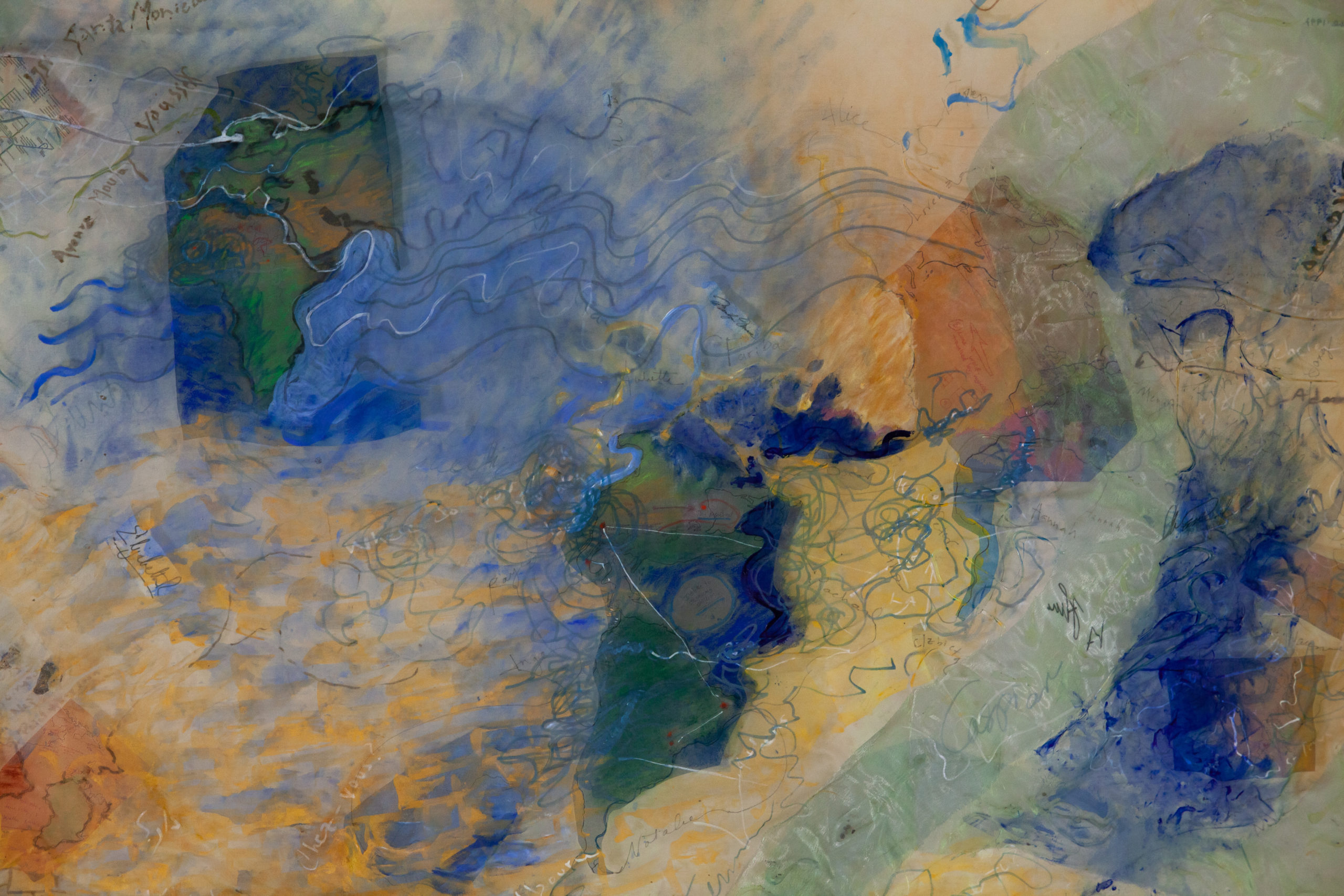
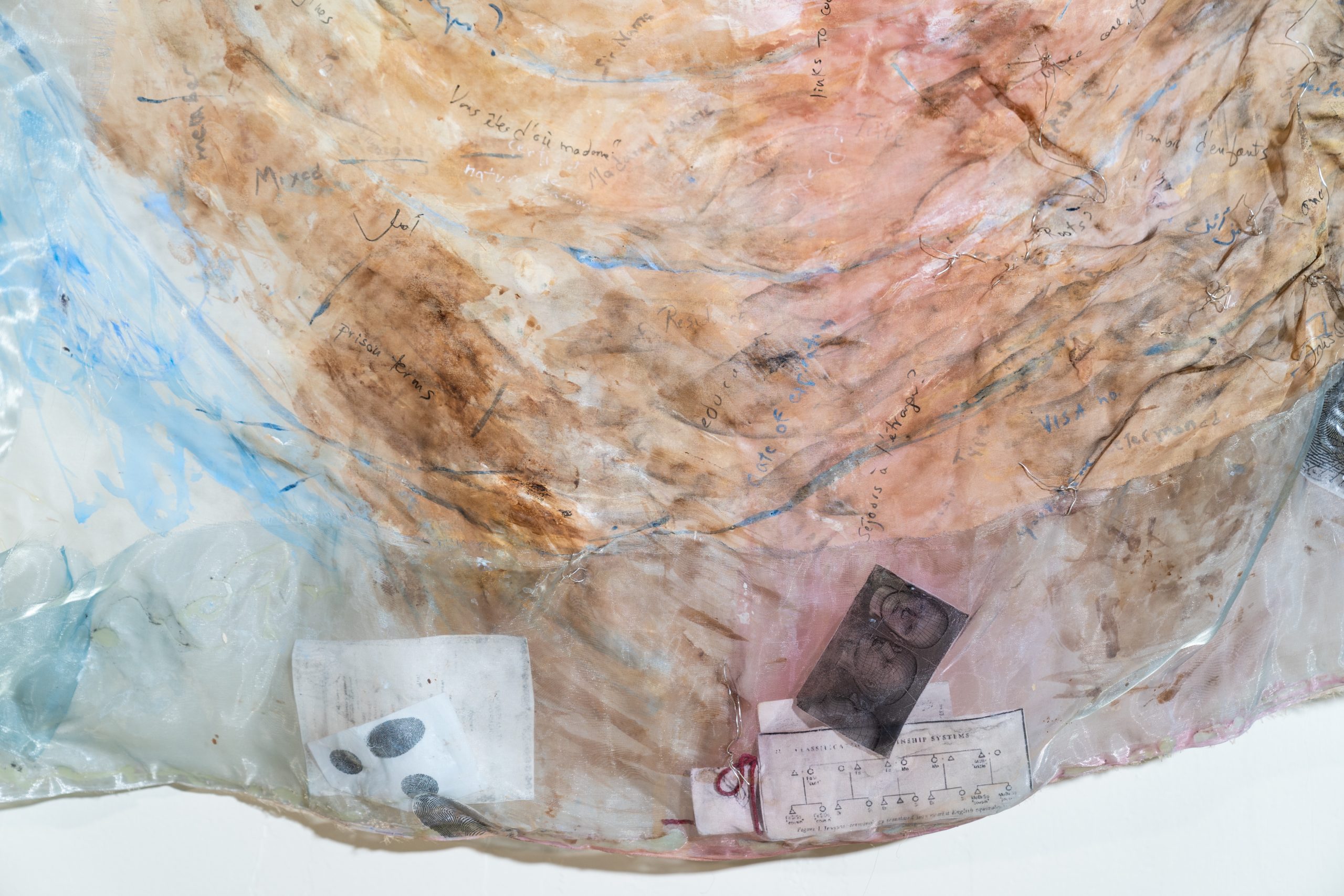
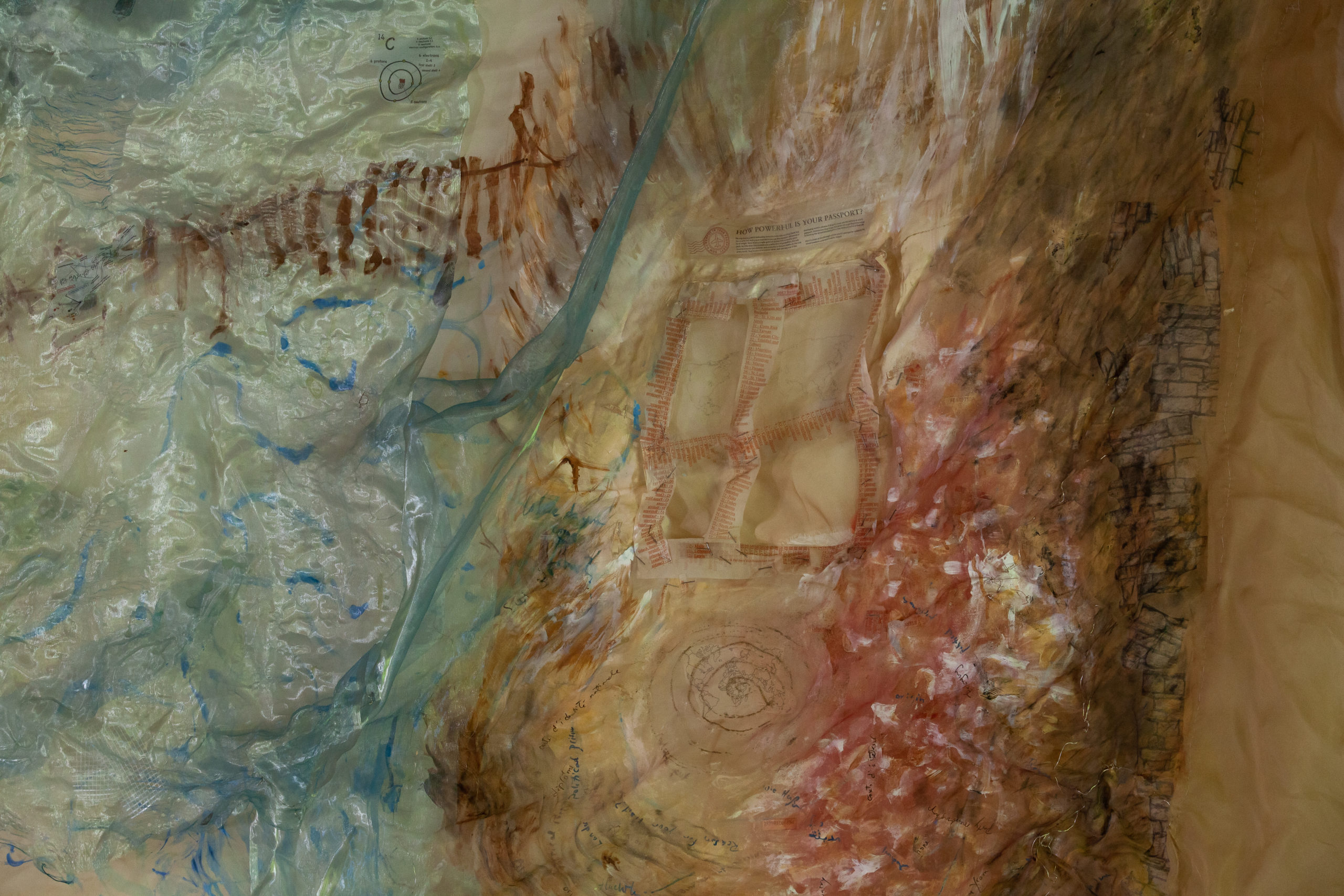

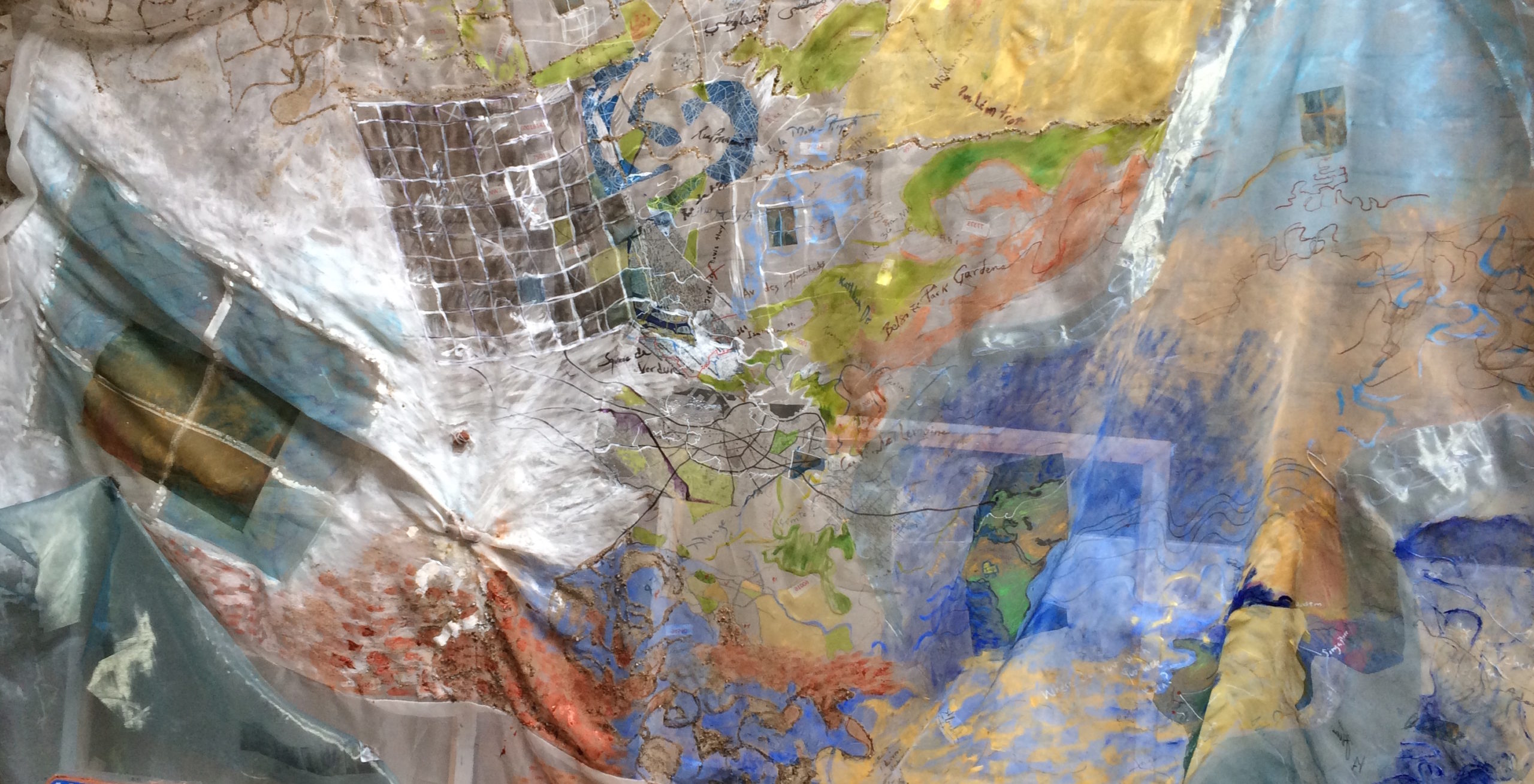
Olga Sezneva is a sociologist, writer and art curator currently teaching at the University of Amsterdam. She dedicated much of her work to unraveling the complexity of history, geography and culture in transferred territories and divided cities. Her writing on forced migration, urban reconstruction and post-war Russia and Europe appeared in Journal of Urban History, Ethnic and Racial Studies, Environment and Planning D: Society and Space and many others.
Susan Ossman is the author of several books, most recently Shifting Worlds, Shaping Fieldwork, a Memoir of Anthropology and Art (Routledge 2021) and the director of The Moving Matters Traveling Workshopart/scholarship collective. Her artwork has been exhibited across Europe and the US. She teaches anthropology and global studies at the University of California, Riverside.

